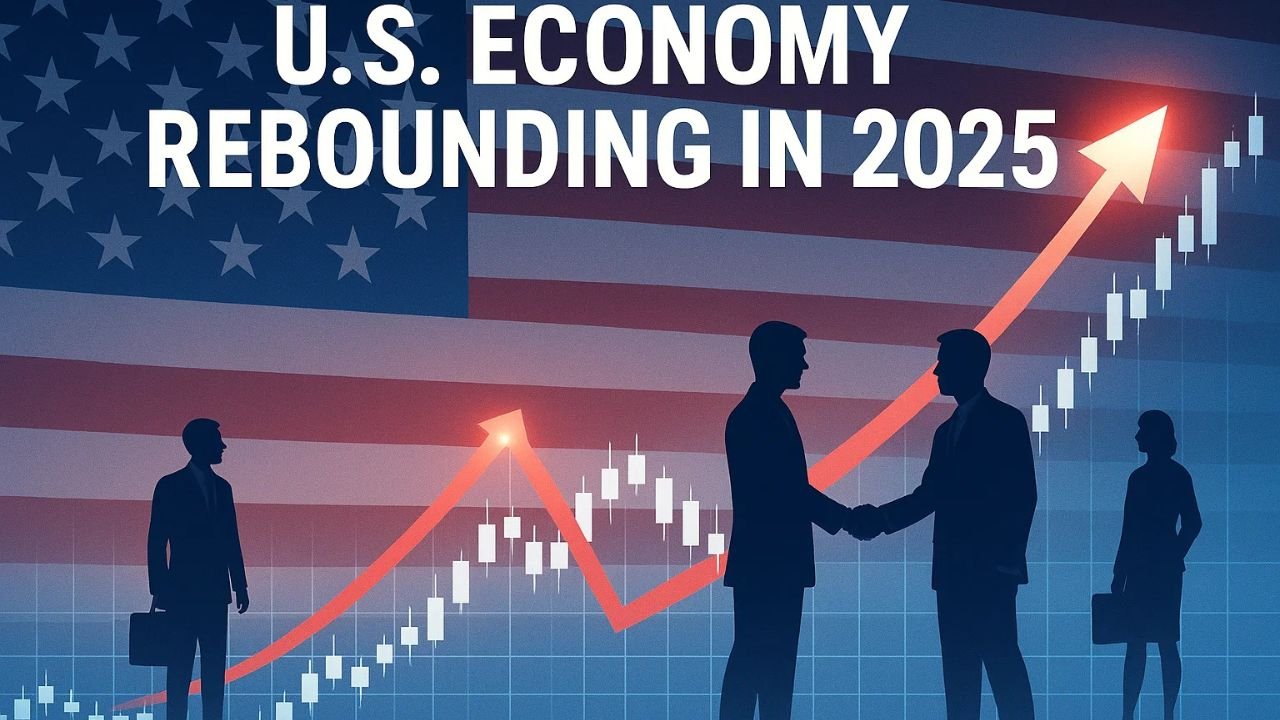Introduction
In July 2025, the United States economy is showing surprising signs of resilience and growth, defying many earlier predictions of a recession. Spurred by renewed optimism around international trade deals and strong corporate earnings, the stock markets are rallying and consumer confidence is gradually returning. With inflation appearing under control and recession fears easing, economists and analysts are re-evaluating their forecasts and acknowledging a stronger-than-expected recovery.
Stock Market Soars on Trade Optimism
One of the clearest indicators of renewed economic confidence is the U.S. stock market. The Dow Jones Industrial Average and S&P 500 recently hit record highs, driven largely by investor enthusiasm over new trade agreements. The U.S.–Japan trade deal, involving $550 billion in Japanese investment and 15% tariffs, is seen as a major win for American manufacturing, technology, and jobs.
Tech giants like Alphabet (Google’s parent company) have reported strong quarterly earnings, boosting investor morale. Meanwhile, gains in sectors like defense, energy, and infrastructure have added momentum to the rally.
Consumer Spending Rebounds
Despite months of caution, U.S. consumers are now returning to retail stores, dining out, and spending more confidently. According to the U.S. Department of Commerce, retail sales rose by 1.4% in June 2025, surpassing expectations. This uptick is attributed to stable fuel prices, increased job security, and a rebound in consumer sentiment.
As inflation stabilizes—hovering at around 2.6% annually—shoppers are less concerned about price volatility. The Federal Reserve’s careful monetary policy and fiscal stimulus from Congress have helped balance the scales, creating a favorable environment for growth.
Corporate Performance and Job Growth
Major U.S. corporations are seeing a bounce back in profits. Microsoft, Amazon, and NVIDIA all posted better-than-expected earnings in Q2 2025. Job creation is also on the rise, particularly in the tech, green energy, and healthcare sectors. The Bureau of Labor Statistics reports that over 275,000 new jobs were added in June alone.
The unemployment rate has dropped to 3.7%, a sign that the job market remains strong and is likely to support sustained economic recovery.
Trade Policy and Political Impact
President Trump’s aggressive trade stance—previously blamed for spurring inflation—is now being praised in some circles for revitalizing domestic industries. The new U.S.–Japan trade agreement is part of a broader effort to reduce reliance on China and reinforce economic ties with stable allies. Similar talks with South Korea, India, and the EU are in progress.
Although critics warn that long-term tariffs could still harm U.S. consumers, supporters argue they are needed to protect American intellectual property, boost exports, and bring supply chains home.
Risks and Challenges Ahead
While current trends are positive, challenges remain. The Federal Reserve must walk a tightrope between stimulating growth and preventing overheating. Wage growth is still uneven, and housing affordability continues to be a major concern, especially in urban centers like Los Angeles and New York.
Additionally, geopolitical tensions, particularly in the South China Sea and Middle East, could impact global trade flows. Climate-related disasters are also an ongoing risk to agricultural output and infrastructure.
Conclusion
The U.S. economy in mid-2025 is showing signs of renewed strength and unexpected growth. A combination of strategic trade deals, strong corporate earnings, rising consumer confidence, and job creation is helping America rebound from the post-pandemic economic slump. However, maintaining this momentum will require balanced policy decisions, continued international cooperation, and close monitoring of inflation and global threats.
For now, optimism is back—and Wall Street is cheering.
